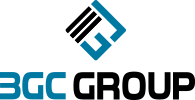User Management Explained
- Karl Aguilar
- Nov 20, 2021
- 2 min read
Updated: Feb 16, 2022

For administrators of an organization’s IT resource, whether it would be for its systems, networks, devices, applications, storage systems to name a few, one of their primary tasks is to perform user management tasks. And while these tasks vary depending on the scope and needs of an organization for their network or systems, there are a basic set of functions and responsibilities that user management entails.
What is user management and why is it essential?
User management is described as the ability for administrators to manage user access to various IT resources. It is a core part to any identity and access management (IAM) solution, particularly directory services tools. With user management, administrators can control which users can access specific resources and help facilitate the onboarding and offboarding of users to and from specific IT resources.
What this entails is that through user management, the access to specific systems, networks, or other IT resources is controlled, preventing others to access these resources without authorization, and thus avoiding hacking or other illicit activities that might be done using such resources. With identity breaches being the most common cybersecurity issue among businesses, user management helps administrators plug these holes wherever they occur.
User management also helps define the roles of different personnel across departments, such that each personnel only have access to the data or other resources based on their specific job functions and their need to access the data as part of their work. This avoids possible issues that may arise due to people accidentally accessing the resources they are not supposed to have access to.
How the cloud is shaping user management
Traditionally, user management has been implemented within organization premises, usually a physical server location or other dedicated facilities that have been built. In recent years, however, it has evolved further thanks to the emergence of cloud technology.
Such advancements have brought about the Infrastructure-as-a-Service (IaaS) platforms such as AWS, Azure, and Google Cloud Platform among others. Coupled with web applications, users have more IT resources available at their fingertips than ever before, which has made user management more essential, as well as more complicated.
Another product of the cloud revolution is the emergence of the cloud directory platform. This platform has allowed users to provision and de-provision access to virtually all IT resources, including Mac, Windows, and Linux systems, web and on-prem applications via LDAM, SCIM, and SAML JIT, WiFi and VPN networks through RADIUS, physical file servers with Samba, among others. Furthermore, the cloud directory platform provides authentication and authorization access through a variety of techniques, including multi-factor authentication, for greater security.
Regardless of the different approaches and systems utilized in user management, at the core of it all is the management of user identities. Given the evolving threats that aim to hack into user identities, it is all the more crucial for IT administrators to ensure that only the right people utilize their IT resources.







Comments